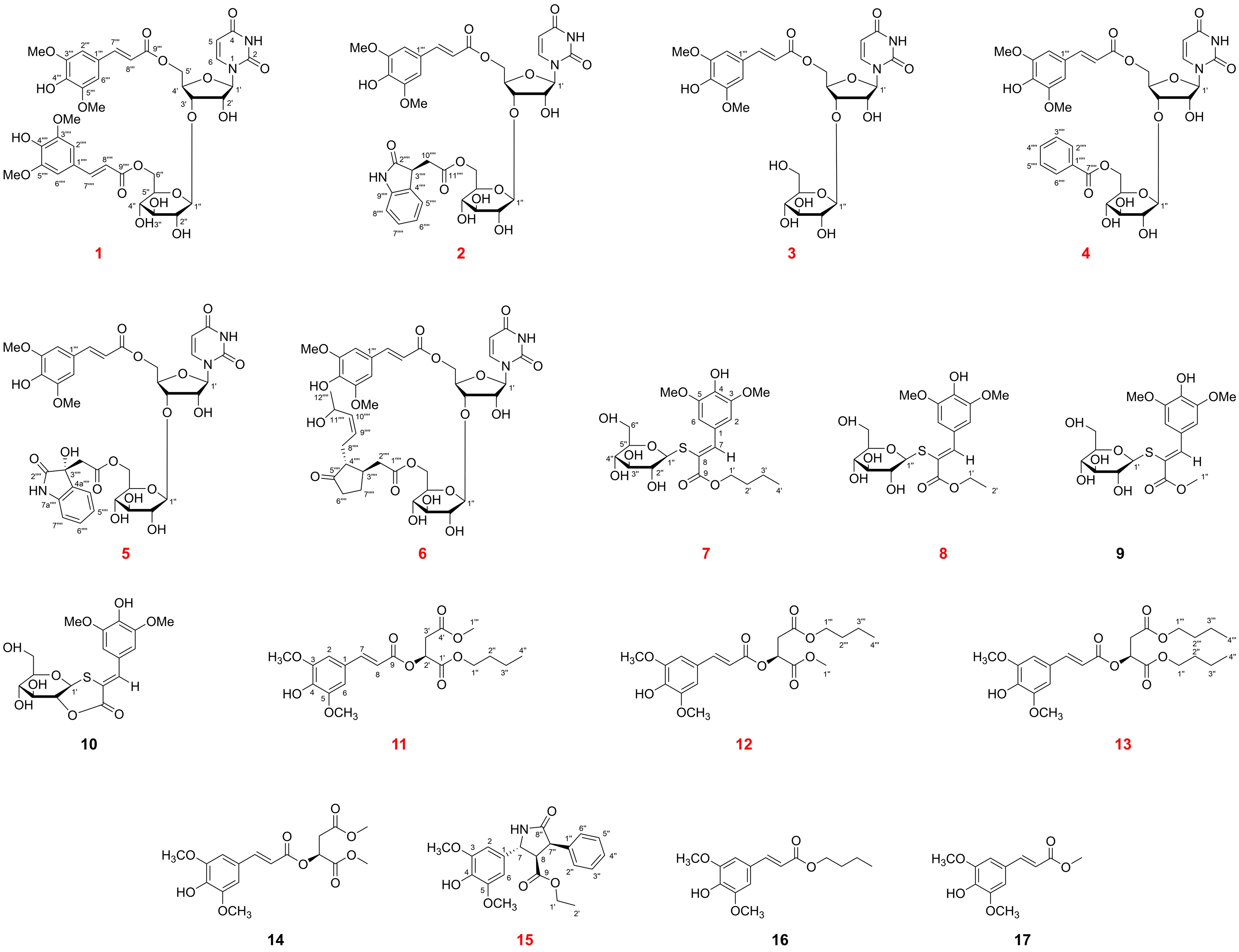Researchers Identify Anti-inflammatory Components in Lepidium sativum seeds
Editor: | Jun 26,2025
Lepidium sativum Linn., a member of the Lepidium genus in the Brassicaceae family, is widely recognized for its high nutritional and medicinal values. The dried mature seeds of L. sativum, known as Jiaduxingcaizi in China, have been used as traditional ethnic medicine, with references found in both the "Uyghur Medicinal Records" and "Uyghur Medicine Ministerial Standards." According to Uyghur medical theory, the seeds of L. sativum possess a variety of therapeutic properties, including the elimination of abnormal mucous, diuresis, kidney nourishment, lung regulation, insecticide effects, wound healing, swelling reduction, cough and asthma relief, as well as spleen strengthening and stomach regulation. These seeds have been employed in the treatment of conditions such as tracheitis, indigestion, and chronic wounds. Previous studies on L. sativum seeds have primarily focused on the essential oils and bioactivity of its extracts.
Sinapic acid, a prevalent secondary metabolite found in the plant kingdom, is an active component in both traditional medicine and food additives. Derivatives of sinapic acid, including sinapoyl glucosides and sinapate esters, are distinctive chemical components found in Brassicaceae plants. To date, only a limited number of sinapic acid derivatives have been reported from L. sativum seeds, indicating that sinapic acid derivatives in L. sativum seeds have not received sufficient attention.
A research team led by Prof. Haji Akber Aisa from the Xinjiang Technical Institute of Physics & Chemistry of the Chinese Academy of Sciences isolated 17 sinapic acid derivatives, including 12 previously undescribed compounds, from L. sativum seeds using an LC-MS/MS guided strategy based on the characteristic mass data of sinapic acid. This work was published in Journal of Agricultural and Food Chemistry.
The ion at m/z 223.06 was recognized as the characteristic fragment of sinapic acid in LC-MS experiment in the negative mode, a finding further corroborated by LC-MS/MS experiments of the isolated compounds afterwards. This LC-MS/MS profiling was applied as a guidng strategy, leading to the isolation of 17 sinapic acid derivatives, including 6 rare sinapic acid derivatives featuring a uridine moiety, 4 sinapic acid derivatives containing sulphur glycosides, 4 sinapoyl malate, and 4 sinapate esters.
MS/MS data of the isolated compounds were thoroughly examined, and the characteristic mass fragments of these sinapic acid derivatives were summarized, providing a solid basis for the efficient separation of sinapic acid derivatives in the future.
Eight compounds presented NO inhibitory activities in LPS-induced RAW264.7 cells, with IC50 values ranging from 16.20 to 86.37 μM. Notably, one compound significantly reduced NO production and the levels of TNF-a, IL-6 and PGE2 in a dose-depended manner. Additionally, this most active compound dose-dependently reduced the protein expression of COX2, iNOS, MAPK, JNK and ERK, suggesting that its anti-inflammatory effect may be mediated through the inhibition of iNOS/COX2 and MAPK signaling pathways.
To further explore the potential mechanism and the interactions of the most active compound with inhibited proteins, docking stimulations were carried out. As a result, this active compound could form multiple hydrogen bonds and hydrophobic interactions with residues of docked proteins, thus led to stable and significant molecular binding between with these proteins.
The findings in this study not only provide new insights into the chemical composition of sinapic acid derivatives in L. sativum seeds, but also highlight sinapic acid derivatives as a potential anti-inflammatory component in L. sativum seeds.
This work was supported by the Tianshan Talent Training Program of Science&Technology Department of Xinjiang Uygur Autonomous Region, and the Science Committee of the Ministry of Science and Higher Education of the Republic of Kazakhstan.

Figure: Structures of sinapic acid derivatives from Lepidium sativum seeds (Provided by Prof. Haji Akber Aisa’s group)
附件下载:
 (86) 991-3838931
(86) 991-3838931 lhskj@ms.xjb.ac.cn
lhskj@ms.xjb.ac.cn (86)991-3838957
(86)991-3838957 40-1 Beijing Road
Urumqi, XinjiangChina
40-1 Beijing Road
Urumqi, XinjiangChina